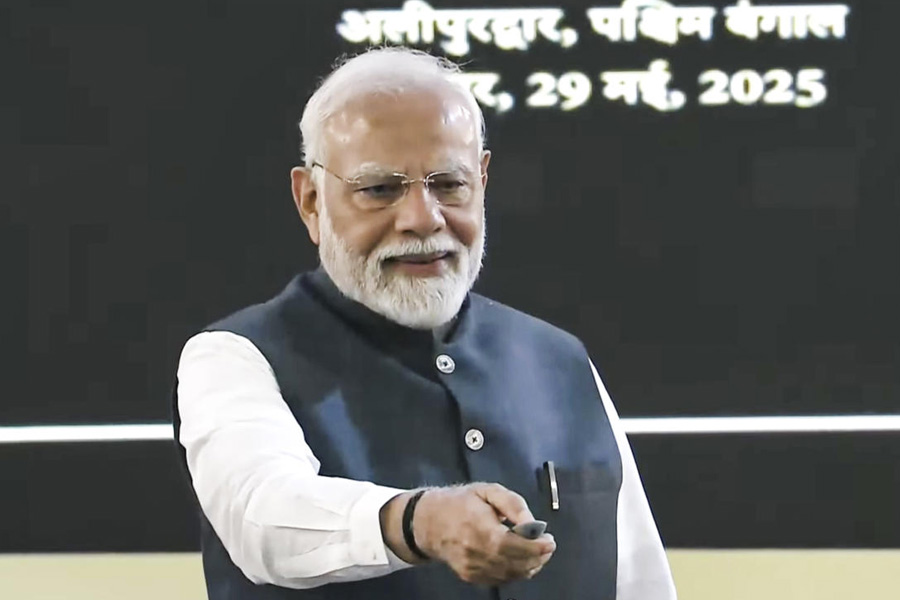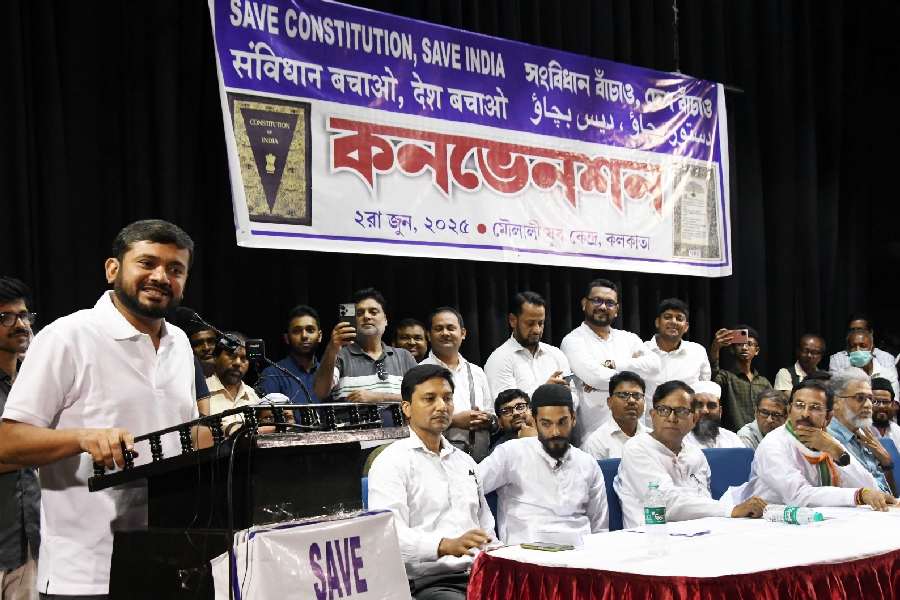Logistic support required to remove 50 tonnes of garbage from the SSKM Hospital campus:
4One pay-loader
410 trucks
4One caged vehicle of the dog-catching squad
450 labourers
430 kg bleaching powder
Fifty tonnes of garbage, the stretch adjacent to the operating theatre of the cardiology department raising a horrible stink, and a campus resembling an animal farm.
SSKM Hospital was a sordid sight for the civic conservancy officials, led by chief engineer Arun Sarkar and assistant director (conservancy) Swapan Mahapatra, who visited it on Thursday morning.
The total load of garbage required to be removed was pegged at “about 50 tonnes”. The things-to-dispose ranged from broken sewer pipes to sanitary pans, plastic tea-cups to used bandages, plasters from the orthopaedic department to rotting leaves and twigs, rubber gloves to rubbish.
The stench in the stretch to the left of the operating theatre of the cardiology department forced the conservancy officials to clamp handkerchieves to their noses while passing by.
Following discussions with the surgeon superintendent Shantanu Tripathi, it was decided that the Calcutta Municipal Corporation (CMC) would launch operation clean-up from Monday morning.
The civic team doing the rounds on Thursday noted with consternation that the vats placed by the CMC on campus wore an empty look, while mounds of garbage and hospital waste piled up at various points.
Tripathi confirmed that there were 14 conservancy sweepers at SSKM, who were on the regular rolls of the government, but they could not be bothered to dump the garbage in the vats. The surgeon superintendent requested the civic conservancy officials to help train the hospital sweepers.
A hospital official explained how the sweepers were under the control of the trade union leaders and the hospital authorities did not dare take action against any of them. At the slightest hint of trouble, he added, their families living on campus would turn on the official trying to discipline them.
Adding to the filth was the four-legged brigade running riot on the hospital premises. The inspection team on Thursday spotted “at least 20 dogs and half a dozen cats” at home on campus.
“Like the Group-D employees, dogs, cats and pigs, too, are permanent residents on the hospital premises. Most of them are pets of these employees. As long as the quarters of the Group-D employees are inside hospitals, the problem of stray dogs, cats and pigs will remain in our health centres,” pointed out mayor Subrata Mukherjee.
“At SSKM Hospital, dogs and cats are common even on the first floor. Doctors and nurses don’t dare protest this, since they are pets in the house of some Group-D employee or the other,” said a doctor.
A senior health official in Writers’ Buildings pointed out that there was no mandatory provision in the Bengal Service Rule (BSR) that Group-D employees be provided with staff quarters on the hospital grounds.
The healthcare hubs would be far cleaner if the quarters of the Group-D employees were taken out of the hospitals and replaced by doctors’ quarters, he added. “To take one family of Group-D staff out of the campus would mean taking out at least two dogs, four cats and four pigs,” the official pointed out.
There are eight medical college hospitals, 22 district hospitals, 56 state general hospitals and they are all sanctuaries of dogs, cats and pigs. Besides, there are 256 block primary hospitals and 923 primary health centres, all adding up to one colossal mess.










